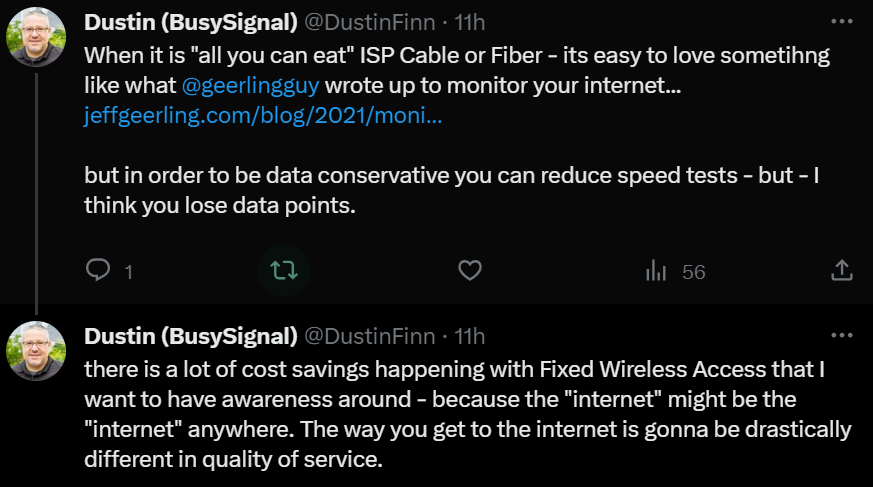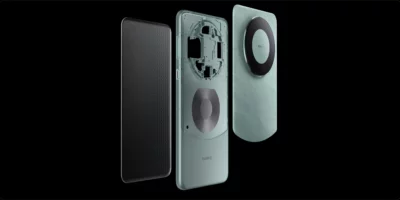
Huawei is shaping the future of connectivity. (Source – Shutterstock)
How Huawei is changing the broadband landscape with 5G FWA
- Huawei is leading the charge in 5G FWA technology, providing a cost-effective and efficient solution to bridge the digital divide.
- Huawei promises a brighter, more connected future for everyone, everywhere.
In this digital age, faster, more reliable internet connectivity is in demand and almost expected as the world races towards 5G. Yet, in reality, achieving this is not always possible. In urban areas, multiple solution options, such as fiber-optic cables or broadband are available, but the digital age has created a divide in connectivity.
Those in inconvenient urban or remote areas often suffer from high installation costs and more difficulty laying fiber optics and power lines. This is compounded by poor infrastructure. This impact means consumers may not benefit from the same quality of access at home, while businesses in remote locations may suffer from unstable or slow connections.
This is why 5G Fixed Wireless Access (FWA) is considered groundbreaking. It offers a cost-effective solution beneficial to smart factories and private campuses in areas that traditionally may not have received investment from telcos due to being financially unattractive.
How does FWA work?
FWA is a wireless broadband technology that leverages the 5G network to offer high-speed internet access to homes and businesses. Unlike traditional broadband that relies on cables, FWA uses radio frequencies, making it a viable solution in areas where wired infrastructure is difficult to install or too costly.
Strategically placed masts on buildings receive the 5G signal, and cables are run from the mast to individual customers. This is great for apartment buildings and provides high-speed connections in areas without cable access, such as rural or suburban locales.
Tech Wire Asia had the opportunity to sit down with Brian Chamberlin, Executive Advisor, Huawei Carrier Marketing, and Edwin Wang, Head of FWA Solution Sales, Huawei Carrier BG, to discuss more on 5G FWA and how it could potentially disrupt traditional broadband services in the next five years in the global and APAC market. According to them, most markets do not see 5G FWA as a disruptive service.

Brian Chamberlin, Executive Advisor, Huawei Carrier Marketing
“Most of our customers are following a Fixed and Mobile Converged (FMC) strategy, meaning they offer both fixed and mobile services to their customers,” Chamberlin said. “For these companies, 5G FWA is simply another way to deliver customers a high-speed broadband connection, complementing their existing fiber broadband service. It’s an excellent tool for delivering broadband services to areas where fiber deployments are simply not cost-effective.”
Wang added that there are some markets where the fixed-line operator faces little or no competition. In those markets, 5G FWA can be seen as a disruptive technology in that it will allow competitors to enter the market where they were previously blocked.
Global 5G infrastructure readiness: Huawei at the forefront
When asked about the readiness of current 5G infrastructure to support widespread FWA adoption, it’s important to note that with the onset of 5G deployments in 2019, more than 215 5G networks have been globally deployed. Of these, 95 (43%) have launched FWA services, serving over 10 million subscribers.
According to them, since 5G FWA uses the same spectrum that mobile services use, if an operator signs up too many customers for their FWA service, it could cause their mobile experience to decline. “To support that balanced deployment, we developed a tool called ‘FWA Suite’ that helps operators manage their FWA and Fiber to the Home services together,” Wang emphasized. It allows frontline customer service agents to see the usage and capacity of a mobile site before signing a customer up for FWA services.
Tools like this can ensure that customers are offered the 5G FWA service only when their mobile signal is good enough to deliver an excellent experience and prevent oversubscribing the mobile network.
As promising as 5G FWA is being advertised, there are concerns about how this will affect rural areas and how it could “close the digital divide.” Both believed that 5G FWA plays an essential role in closing the digital divide. The cost to deploy fiber in a rural area can be far higher than in an urban area.
“Recently, an article in the Wall Street Journal claimed that some communities were spending an average of US$56,000 per subscriber to connect them to a fiber network. That is far higher than the typical cost of US$2,000 per line that we see in Europe, but it shows how expensive laying new fiber in rural areas can be,” Chamberlin said.

Edwin Wang, Head of FWA Solution Sales, Huawei Carrier BG
90% of the cost of fiber is in the civil engineering work: digging up roads, laying conduit, rebuilding the road, etc. 5G FWA can connect these subscribers for a fraction of the cost because none of that civil work is required. “Once the mobile site is built, then the only cost to connect a new home is the CPE price, typically US$120 – US$150. In rural areas, 5G FWA is often the most cost-effective way to deliver home broadband services,” Wang added.
So, that’s just one of the hurdles that raised concerns. Neither Wang nor Chamberlin see any challenges in convincing customers to adopt 5G FWA.
Customer perceptions of 5G FWA
According to them, it’s just a broadband connection to the customer, and they don’t care about the underlying technology. Consumers only care about the customer experience. They stated how most of their customers don’t promote the specific technology; they offer a broadband service, then pick the right technology to provide that service based on your location.
One disadvantage with fiber to the home is the time required to connect a new home. They have some customers that provide their subscribers with an instant connection using 5G FWA, and then when the fiber becomes available in that area, they swap the FWA CPE out and replace it with a fiber connection. That is just one of the many models they’ve seen for Fiber/5G FWA collaboration.
When asked about the alignment of 5G FWA with environmental sustainability goals, especially considering its potential for reducing engineering work and materials needed for cabling, they broke it down, saying that when 5G FWA is used to replace legacy DSL service, operators can both increase the speeds offered to their customer and reduce their energy consumption.
“One customer we worked with, their copper network accounted for roughly half of their infrastructure power consumption,” Chamberlin added. “Migrating those customers to 5G FWA resulted in substantial power savings.”
However, if they compare 5G FWA to fiber PON (Passive Optical Networks), they usually find PON is the greener solution. So for green networks, they advise operators to deploy fiber to the areas where it’s cost-effective, and 5G FWA for the lower density areas where fiber doesn’t make sense. This will provide a green and cost-effective broadband network.

An X user questions real stats of what 5G access actually looks like. (Source – X)
Amid all these advances, what is Huawei’s role? First and foremost, Huawei stands out with its technical innovations in 5G FWA solutions, as demonstrated by the recent launch of its new CPE Pro 5 to provide the ultimate 5G FWA experience.
This device is equipped with three transmitting antennas, supports three-channel carrier aggregation, and has an output power of 26dBm. These features collaboratively enable the CPE Pro 5 to attain a peak download speed of 5.4Gbps.
Huawei’s 5G FWA solutions are tailored to support diverse applications. Huawei has introduced a Quality of Service (QoS) feature for business users, allowing operators to assure business customers of guaranteed download speeds.
For gaming, especially those utilizing cloud gaming services, Huawei has rolled out a Game Turbo service, reducing the overall latency by 50%, from 150ms to 100ms.
“As you can see, at Huawei, we scrutinize how users employ the network and introduce new features to accommodate those scenarios. This approach is integral to our strategy,” Chamberlin emphasized. “In our quest to deliver the ultimate 5G FWA experience, we have launched the latest generation CPE 5 with our partners, enabling a peak download speed of 5.4Gbps.”
Huawei making 5G FWA accessible globally
A pertinent question is raised in the swiftly evolving 5G FWA landscape: How is Huawei making 5G FWA solutions more affordable, especially in less economically developed regions? Huawei is pioneering clear and innovative paths to bolster FWA accessibility and affordability in emerging markets.
On the network side, Huawei is channeling efforts to enhance spectrum efficiency through innovative radio signals, thus expanding the supportive customer base on existing network infrastructures. Concurrently, on the device side, Huawei promotes the adoption of RedCap, substantially diminishing the cost of 5G FWA Customer Premises Equipment (CPE).
Known for its beneficial partnerships, Huawei collaborates with various governments and NGOs to maximize societal benefits from technology. The company’s Tech4All program, concentrating on education, the environment, health, and digital inclusion, is a vibrant example.
“For instance, in South Africa, our partnership with RAIN and the NGO Click Foundation is bringing online literacy to primary schools nationwide, resonating with the government’s vision for universal reading ability by grade three. Just a year ago, this project connected 90 schools, reaching 52,000 students. This is merely one of the myriad projects underscoring our commitment to universal digital technology benefits, including FWA,” elaborated Wang.
Peering into the future, Huawei’s enthusiasm for new technologies, like the cost-reducing RedCap and the maturing mmWave, is palpable. These advancements promise to enhance user experience and affordability and bridge the global digital divide.
“These types of speeds will not only cater to home users desiring a premium experience but will also buoy small businesses, enabling them to leverage digital services fully. This move towards diminishing the digital divide is something we ardently look forward to,” Chamberlin concluded.
READ MORE
- Safer Automation: How Sophic and Firmus Succeeded in Malaysia with MDEC’s Support
- Privilege granted, not gained: Intelligent authorization for enhanced infrastructure productivity
- Low-Code produces the Proof-of-Possibilities
- New Wearables Enable Staff to Work Faster and Safer
- Experts weigh in on Oracle’s departure from adland


